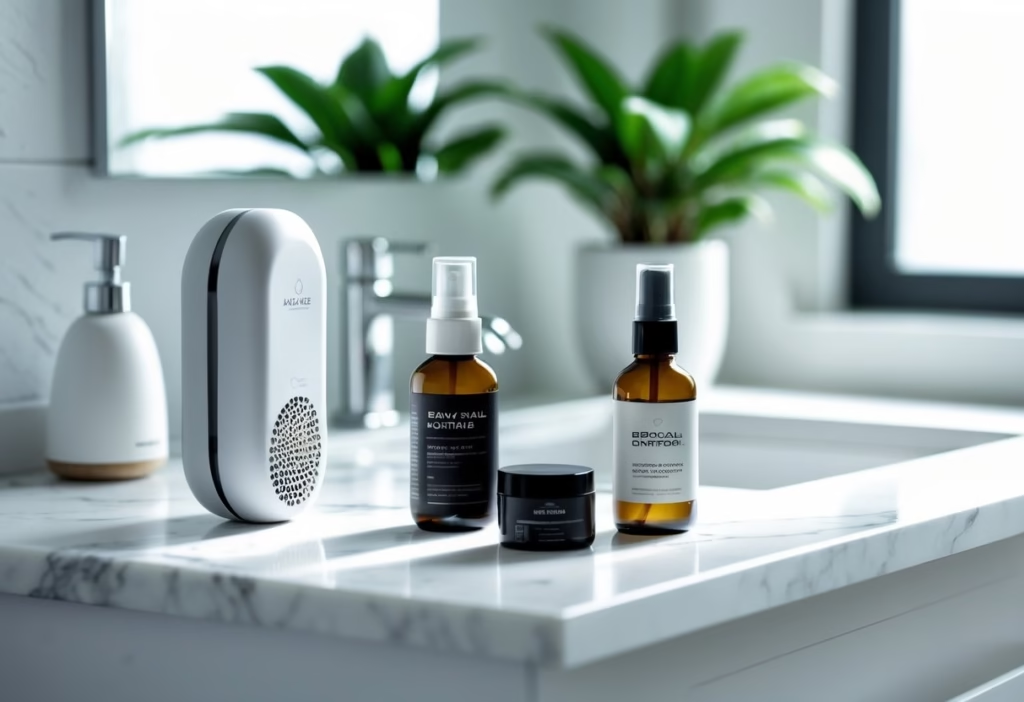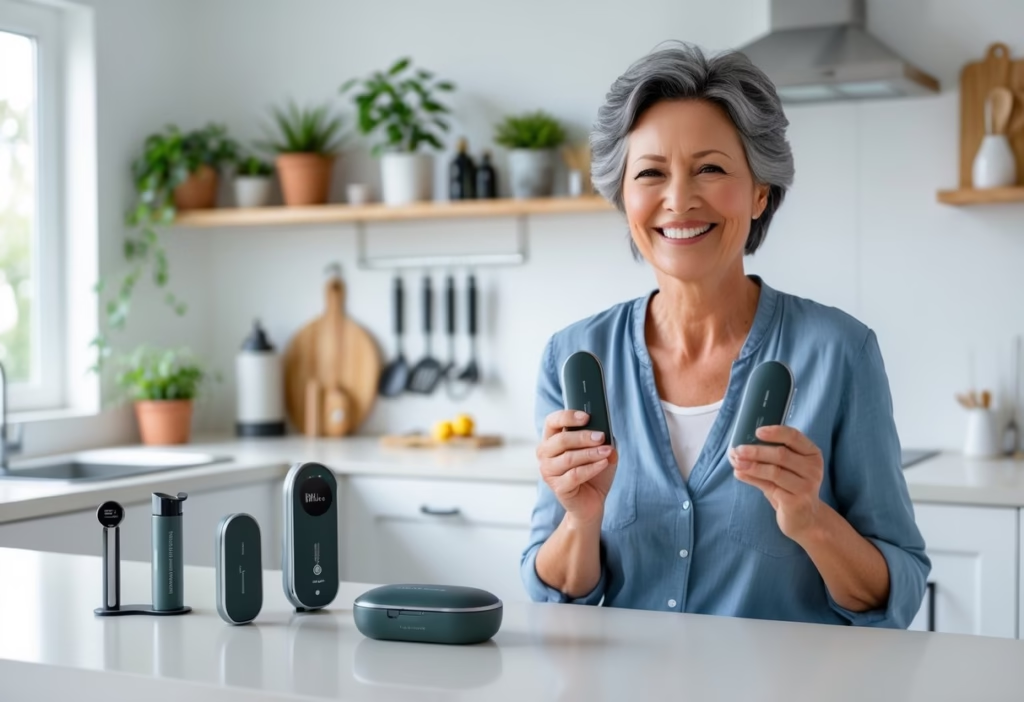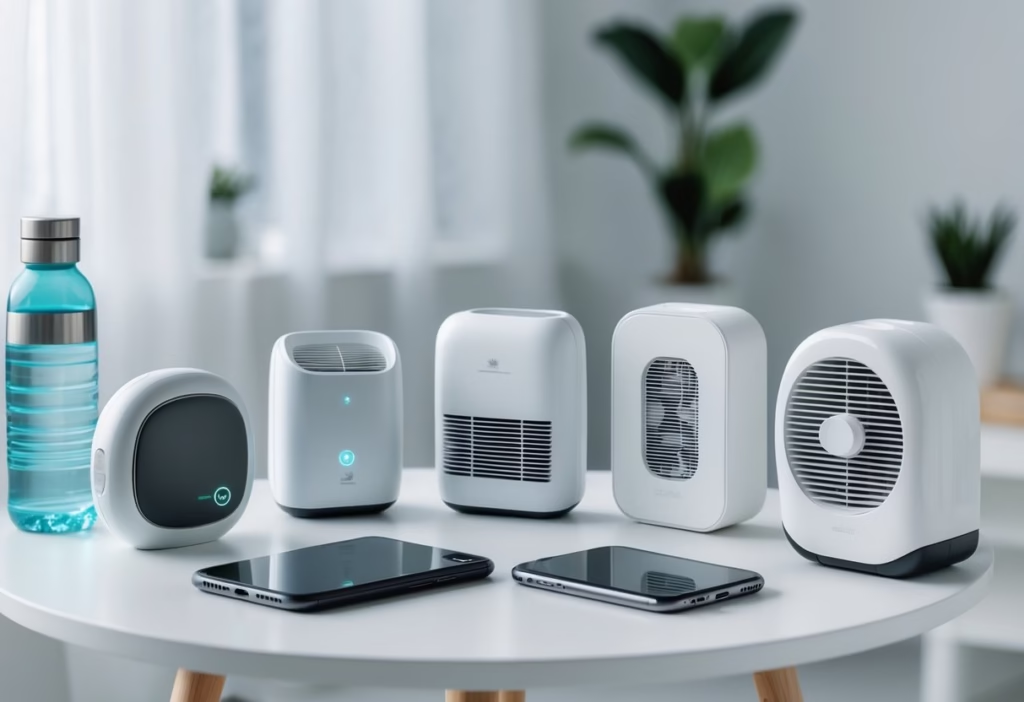Recommended Gadgets
Recommended Gadgets for Managing Intestinal Odors: Boost Everyday Confidence
Dealing with intestinal odors can affect daily confidence and social interactions, but the right tools can make a significant difference. Many people struggle with these concerns, whether due to digestive conditions, ostomy care needs, or general intestinal health issues. The good news is that modern technology offers practical solutions designed specifically for odor management.

Advanced gadgets and specialized products can effectively neutralize intestinal odors while providing discreet, comfortable support throughout the day. From activated charcoal filters to innovative deodorizing systems, these tools work behind the scenes to address odor concerns at their source. Many of these devices are designed to integrate seamlessly into daily routines without drawing attention or causing discomfort.
This guide explores proven gadgets that help manage intestinal odors, support overall digestive health, and maintain skin comfort. The focus remains on practical tools that offer real-world solutions, covering everything from basic odor control devices to comprehensive support systems that enhance quality of life and restore confidence in social situations.
Understanding Intestinal Odors and Their Impact

Intestinal odors affect millions of people daily, creating both physical and emotional challenges that extend far beyond the medical condition itself. The psychological burden often weighs heavier than the physical symptoms, impacting social interactions and self-confidence in profound ways.
Causes of Intestinal Odors
Bacteria in waste produce gases that create strong smells, particularly when urine and stool mix. This natural process becomes more noticeable for people with ostomies or digestive conditions.
Dietary factors play a major role in odor intensity:
- Odor-increasing foods: Fish, garlic, onions, asparagus
- Odor-reducing options: Cranberry juice, parsley, buttermilk, yogurt
Food choices directly influence the strength and frequency of intestinal odors. Keeping a food diary helps identify personal trigger foods and beneficial options.
Medical conditions that contribute to odor issues include inflammatory bowel disease, where excess sulfur in the digestive system and malabsorption of foods are common causes. These conditions create additional challenges beyond normal digestive processes.
The timing of waste elimination also affects odor development. Longer retention periods allow more bacterial activity, increasing smell intensity.
Psychological Effects and Confidence
Fear of odor can negatively affect confidence, social interactions, and mental well-being even when others may not notice anything. This psychological impact often proves more challenging than the physical condition itself.
Social anxiety develops when people worry about others detecting odors. Many individuals avoid social gatherings, restaurants, or close physical contact due to these concerns.
Self-esteem issues emerge from constant worry about body odors. People may feel embarrassed or ashamed, leading to isolation and reduced quality of life.
Relationship impacts occur when individuals pull away from family and friends. Intimate relationships suffer when people fear their partner will notice unpleasant smells.
The psychological burden creates a cycle where stress about odors can actually worsen digestive symptoms. Breaking this cycle requires both practical odor management and emotional support.
Daily Life Challenges for Ostomates
Ostomates face unique challenges in managing intestinal odors throughout their daily routines. Work environments present particular difficulties when discreet solutions for professionals become necessary.
Workplace concerns include fear of odor detection during meetings or in shared spaces. Many ostomates worry about using workplace restrooms for emptying or changing their pouches.
Travel complications arise when normal routines get disrupted. Airport security, limited bathroom access, and unfamiliar foods can all impact odor control strategies.
Exercise limitations develop when people avoid physical activities due to odor concerns. Gym environments and sports activities may seem too risky for maintaining discretion.
Clothing choices become restricted as individuals select loose-fitting garments to conceal equipment and potential odors. Fashion preferences take second place to practical considerations.
Sleep quality suffers when people worry about nighttime odors affecting their partner. Some individuals choose separate sleeping arrangements to avoid embarrassment.
Managing these daily challenges requires both practical tools and emotional resilience to maintain normal activities and relationships.
Top Gadgets for Effective Odor Management

Modern ostomy pouches feature advanced filtration systems, while activated carbon products neutralize gases at their source. Specialized covers provide additional protection and discretion for daily activities.
Ostomy Pouches with Built-In Filters
Modern ostomy pouches include integrated filter systems that prevent gas buildup and reduce odors. These filters contain activated carbon materials that neutralize gases before they escape the pouch.
Two-piece systems offer replaceable pouches with fresh filters. Users can change pouches without removing the skin barrier. This design maintains filter effectiveness throughout the day.
One-piece systems combine the skin barrier and pouch with a permanent filter. These work well for people who prefer fewer components. The filter typically lasts for the entire wear time of the pouch.
Most filters include waterproof covers for showering and swimming. Users simply place a small sticker over the filter opening. This prevents water from entering while maintaining the seal.
Filter effectiveness depends on proper placement and care. Blocked filters lose their ability to release gas safely. Users should check filters regularly and replace pouches when filters become clogged.
Activated Carbon Odor Absorbers
Activated carbon products work by trapping odor molecules in tiny pores. These products come in several forms for different odor control needs.
Pouch deodorizers include drops and powders added directly to ostomy pouches. Products like M9 odor eliminator drops neutralize waste odors inside the pouch. Users typically add 3-5 drops before sealing the pouch.
Room sprays contain activated carbon particles suspended in liquid. These sprays work quickly to eliminate bathroom odors. Many products target specific odor molecules rather than just masking smells.
Wearable carbon pads attach to clothing or ostomy covers. These thin pads provide continuous odor absorption throughout the day. They work especially well under tight-fitting clothes.
Gelling sachets combine carbon with absorbent materials. ConvaTec’s Diamonds sachets turn liquid waste into gel while controlling odors. This dual action improves pouch performance and reduces smell.
Ostomy Covers and Discreet Accessories
Ostomy covers provide an extra barrier against odors while improving comfort and appearance. These accessories work alongside built-in pouch features for better odor control.
Fabric covers wrap around ostomy pouches with soft materials like cotton or bamboo. Many include activated carbon layers between fabric sheets. This combination absorbs moisture and traps odor molecules before they reach clothing.
Compression wraps hold pouches close to the body while providing odor control. These stretchy bands include carbon inserts or scented materials. They work well during exercise or physical activities when pouches might shift.
Pocket accessories allow users to carry odor elimination products discreetly. Small bottles of deodorizing drops fit easily in purses or pockets. Travel-sized sprays provide quick odor control away from home.
Belt attachments include small pouches for carbon filters or scented pads. These accessories clip onto ostomy belts or clothing. Users can replace the odor-absorbing materials as needed without changing the entire system.
Innovative Tools for Continence and Incontinence Support
Advanced absorbent materials now feature built-in odor control systems, while portable deodorizing units provide immediate relief anywhere. Electronic neutralizers offer hands-free operation with smart sensors that detect and eliminate odors automatically.
Modern Absorbent Products
Today’s innovative incontinence products incorporate advanced materials that quickly absorb moisture while neutralizing odors. These products feature activated charcoal layers and odor-locking gels built directly into the core structure.
Modern absorbent products offer several key improvements:
- Enhanced absorbency with thinner, more discreet designs
- Moisture-wicking capabilities that pull wetness away from skin
- pH-balanced materials that maintain natural skin balance
- Hypoallergenic construction to prevent irritation
The newest designs include elastic waistbands and adjustable tabs for a secure, comfortable fit. Many products now feature tear-away sides and resealable tapes for quick changes.
Skin-friendly designs prioritize breathability to reduce skin irritation risks. These materials allow better airflow while maintaining effective leak protection.
Portable Deodorizing Devices
Compact deodorizing devices provide immediate odor control for people managing incontinence away from home. These battery-powered units fit easily in purses, bags, or pockets for discreet use.
Spray-based deodorizers offer instant neutralization with targeted application. Many contain natural enzymes that break down odor-causing compounds rather than simply masking smells.
Portable ozone generators create a sanitizing effect that eliminates bacteria and odors. These devices typically run for 5-10 minutes and automatically shut off for safety.
Key features to look for include:
| Feature | Benefit |
|---|---|
| Rechargeable battery | Long-lasting use |
| Quiet operation | Discreet application |
| Multiple settings | Customizable intensity |
| Compact size | Easy portability |
Some units include UV-C light technology that kills odor-causing bacteria on contact. These combination devices offer both immediate and long-term odor prevention.
Electronic Odor Neutralizers
Smart electronic neutralizers use sensors to detect odors and activate automatically. These technology-driven solutions provide hands-free continence care support with minimal user intervention.
Photocatalytic oxidation units break down odor molecules at the molecular level. They use titanium dioxide and UV light to create hydroxyl radicals that neutralize smells completely.
Ionization technology releases negative ions that bind to odor particles and neutralize them. These devices work continuously and require minimal maintenance beyond occasional cleaning.
Advanced models include smartphone connectivity for remote monitoring and control. Users can adjust settings, check battery levels, and receive maintenance alerts through dedicated apps.
Installation options range from plug-in wall units to battery-powered portable models. Many devices feature timer settings and intensity controls for customized operation based on individual needs.
The ease of use makes these electronic solutions ideal for people with limited mobility or dexterity challenges.
Maintaining Skin Health and Comfort
Healthy skin around the stoma creates a better seal for pouches and reduces odor-causing leaks. The right protective products and materials can prevent irritation while keeping users comfortable throughout daily activities.
Protective Barriers and Wipes
Barrier rings and paste create a protective seal between the stoma and pouch. These products prevent waste from touching the skin directly. This protection stops irritation that can lead to poor pouch adhesion and odor problems.
Maintaining healthy peristomal skin is essential for preventing odors. When skin stays healthy, pouches stick better and last longer.
Common Barrier Products:
- Moldable barrier rings
- Barrier paste or caulk
- Barrier strips
- Liquid skin protectants
Ostomy wipes remove adhesive residue without harsh scrubbing. Regular soap can dry out sensitive skin around the stoma. Specialized wipes contain gentle cleansers that maintain the skin’s natural moisture.
Users should choose alcohol-free wipes to avoid stinging. Wipes with added moisturizers help keep skin soft and flexible. This flexibility allows pouches to move with the body without pulling away from the skin.
Moisture-Wicking Fabrics
Moisture-wicking underwear and clothing keep the pouch area dry. Wet conditions under pouches can cause skin breakdown and odor issues. Synthetic fabrics like polyester blends pull moisture away from skin better than cotton.
Specialized ostomy underwear has built-in pouches or support panels. These garments distribute weight evenly and prevent the pouch from pulling on the skin. The support also reduces movement that can cause leaks.
Fabric Features to Look For:
- Quick-dry materials
- Antimicrobial treatments
- Seamless construction
- Stretchy waistbands
Bamboo fabrics offer natural moisture control and softness. They resist odor-causing bacteria while feeling comfortable against skin. Many users find bamboo more comfortable than synthetic options for long-term wear.
Base layers made from moisture-wicking materials work under regular clothes. They create a barrier between the pouch and outer clothing while managing temperature and humidity.
Choosing Skin-Friendly Materials
Hypoallergenic adhesives reduce the risk of allergic reactions. Skin irritation is one of the most common challenges ostomates face. Testing new products on a small skin area first helps identify potential problems.
Silicone-based adhesives remove more gently than traditional options. They cause less trauma when changing pouches. This gentleness helps maintain skin integrity over time.
Skin-Safe Material Checklist:
- Latex-free components
- Fragrance-free formulas
- pH-balanced products
- Dermatologist-tested items
Breathable pouch materials allow air circulation around the stoma. Better airflow reduces moisture buildup that can cause skin problems. Fabric-backed pouches often feel more comfortable than plastic versions.
Extended-wear products should balance adhesion time with skin health. Wearing pouches too long can cause skin damage. Most barriers work best when changed every 3-5 days depending on individual needs.
Users with sensitive skin benefit from barrier extenders or tape with gentler adhesives. These products provide extra security without using harsh materials directly on irritated areas.
Convenience and Lifestyle Integration
Modern odor management tools seamlessly fit into busy schedules and travel routines. Digital apps help track symptoms while portable devices and efficient cleaning systems maintain confidence throughout the day.
Gadgets Designed for Travel and Work
Compact deodorizing devices fit easily into briefcases and carry-on luggage. Battery-powered air purifiers designed for personal use create odor-free zones in offices or hotel rooms.
Travel-sized odor neutralizers come in discreet packages smaller than a smartphone. These devices operate silently and run for 8-12 hours on a single charge.
Essential Travel Features:
- USB charging capabilities
- Compact size under 6 inches
- Silent operation modes
- Airline-approved designs
Portable wearable air purifiers clip onto clothing or bags. They create personal clean air bubbles within a 3-foot radius using advanced filtration technology.
For ostomates, specialized travel kits include odor-absorbing pouches and discrete disposal bags. These systems maintain dignity and confidence during business trips or vacations.
Smartphone Apps for Self-Management
Digital tracking apps help users identify odor triggers and patterns. They record food intake, medication timing, and symptom severity on easy-to-use interfaces.
Popular apps include symptom diaries with photo capabilities and reminder systems for medication schedules. Users can share data directly with healthcare providers through secure platforms.
Key App Features:
- Daily symptom logging
- Food and trigger tracking
- Medication reminders
- Progress reporting tools
Some apps connect with wearable devices to monitor digestive patterns automatically. This data helps predict when odor episodes might occur throughout the day.
The ease of use makes these apps valuable for long-term health management. They provide detailed reports that help optimize treatment plans and lifestyle adjustments.
Disposal and Cleaning Solutions
Automated disposal systems eliminate manual handling of waste materials. These devices seal and store used items in odor-proof containers until proper disposal.
Touchless cleaning gadgets use UV light or ozone technology to sanitize surfaces quickly. They require no chemicals and complete cleaning cycles in under 60 seconds.
Cleaning Technology Options:
- UV sanitizing wands
- Ozone generators
- Enzyme-based cleaners
- Antimicrobial sprays
For ostomates, specialized ostomy appliance cleaning systems provide thorough sanitization without harsh chemicals. These systems extend equipment life while maintaining optimal hygiene.
Self-cleaning storage containers use antimicrobial coatings to prevent bacterial growth. They maintain freshness for supplies and used materials until disposal becomes convenient.